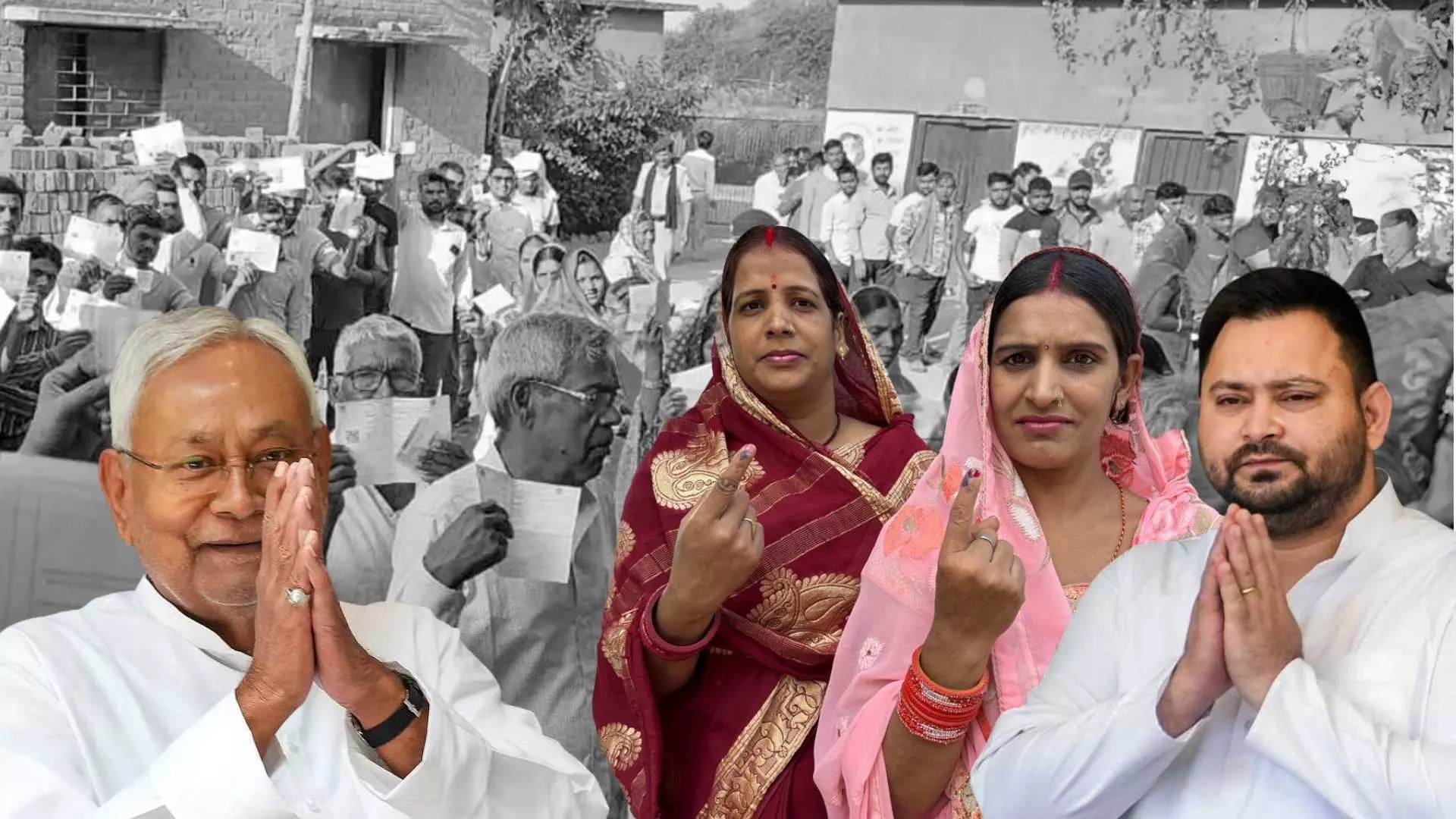
Bihar records impressive turnout, signalling fierce electoral contest ahead
Nearly 65% polling in Bihar’s first phase marks a new high. Does the surge in voter participation point to anti-incumbency or renewed faith in Nitish Kumar?

Bihar’s first phase of polling witnessed one of its highest turnouts in recent years, setting the tone for a closely fought election. Nearly 65% of voters turned up across 121 constituencies — a figure that surpassed the 2020 election numbers and sparked debate over what this surge in participation might mean for both major alliances.
Analysts suggest that the spike in voting could indicate anti-incumbency sentiments in certain regions, while in others it may reflect a consolidation of traditional voter bases. The enthusiasm among women voters once again stood out, continuing Bihar’s decade-long trend of higher female participation compared to men.
Women voters’ influence
Observers note that women’s turnout often proves decisive, especially in rural constituencies where welfare schemes and livelihood programmes have shaped local politics. According to reports, the NDA — led by Nitish Kumar's JDU and the BJP — may interpret the high turnout as confidence in its governance model and grassroots presence.
On the other hand, the Mahagathbandhan under Tejashwi Yadav views it as a sign of growing demand for change, particularly among the youth and first-time voters.
“The voting patterns among women, men, and caste groups are distinct,” said The Federal’s political editor, Puneet Nicholas Yadav. “In previous elections, a high voter turnout among women generally favoured Nitish Kumar.”
Local issues drive turnout
Unemployment emerged as one of the defining issues of this election, with conversations around jobs resonating strongly among male voters. “If there’s been an increase in male voter turnout, that could have gone against the government,” Yadav observed, referring to how employment concerns may have swayed younger and urban voters.
Experts also point out that both alliances have tailored their campaigns to localised issues — from unemployment and migration to caste and welfare — making it difficult to draw conclusions solely from turnout data.
Beyond the 'vote chori' narrative
This phase also saw increased participation from marginalised communities, with reports of long queues in regions that had previously recorded low voter engagement. While the issue of vote chori (voter list manipulation) was prominent during the revision controversy, it did not appear to influence voting behaviour significantly.
“It was definitely a narrative that people were rallying behind,” Yadav explained. “But across my travels in Bihar, I did not come across anyone who said they were voting with vengeance because of vote chori. The dominant issues were unemployment, cash doles, local concerns, and caste factors.”
Looking ahead
As Bihar moves into the second phase of polling, attention now turns to whether this momentum will sustain and what it could mean for the outcome. Whether the record turnout translates into continuity or change will only be known when results are declared on November 14.
The content above has been transcribed from video using a fine-tuned AI model. To ensure accuracy, quality, and editorial integrity, we employ a Human-In-The-Loop (HITL) process. While AI assists in creating the initial draft, our experienced editorial team carefully reviews, edits, and refines the content before publication. At The Federal, we combine the efficiency of AI with the expertise of human editors to deliver reliable and insightful journalism.

